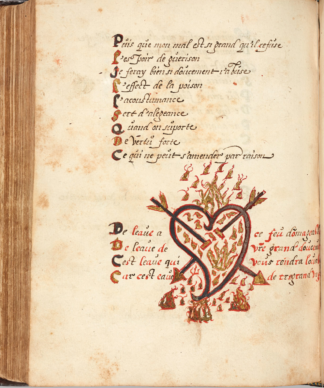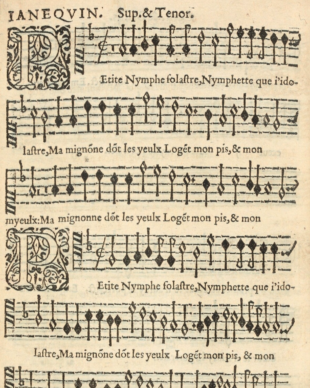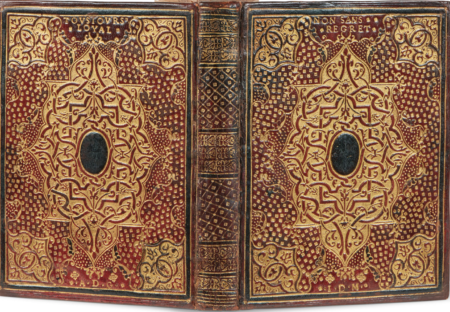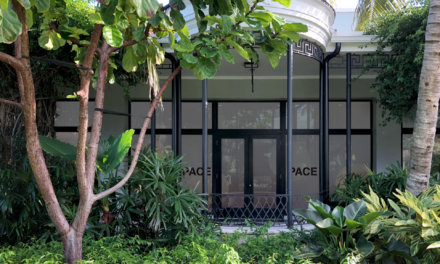Non essential values?

Chansons d’amour, Pierre de Ronsard
During a period of time that is both very market-centric and fairly disoriented, you might think that Renaissance literature, like art more generally, belongs to the category of “non-essential” values. However, globally and against all expectations not only is the art market faring relatively well but literature itself may prove to be one of culture’s impregnable citadels.
Jean-Paul Barbier-Mueller
23 March 2021 will be marked as a date to test the matter, as Christie’s is presenting the first part of a sprawling collection in Paris that is entirely dedicated to 16th-century French poetry. 121 volumes that have been passed down over centuries have been assembled by a famous collector, Jean-Paul Barbier-Mueller (1930-2016), who was incidentally best known for his collection of tribal art. The figures representing his passion are colossal.
9000 books

Les oeuvres de Pierre de Ronsard
The ensemble up for sale is part of a library of over 9000 works, due to be dispersed over time. You may think Renaissance poetry is a recondite theme. But for anyone interested in the French language, the most famous of the authors from this period, Pierre de Ronsard (1524-1585), is mandatory reading.
See my darling

It was he who wrote “Mignonne, allons voir si la rose/ Qui ce matin avoit declose/ Sa robe de pourpre au soleil,/ a point perdu cette vesprée” (“See, my darling, hath not the Rose, / That this morning did unclose / Her purple mantle to the light, / Lost, before the day be dead”). It was in 1545 that he wrote these words, which have been passed down to us and entered into posterity.
It’s like music

Amours, P de Ronsard
Jean-Paul Barbier-Mueller, whom I met in 2006 for an interview about his passions as a collector, declared on the subject: “Ronsard’s poetry? Read it aloud, and it’s like music. You can open Les amours d’Hélène at random, before going to sleep, and if you read a passage out loud you will fall asleep in a state of bliss. Especially if you read from the original edition.” So this is how he used it: he read a lot, often poetry, in their original editions. He was even able to spontaneously recite entire poems.
From 1947 to 2016
In 1947 he bought his first Ronsard in its original edition and decided that he would create a poetry collection. According to the Christie’s expert, Adrien Legendre, he continued to buy them right up until just before his death.
Pierre de Ronsard

Original editions of Pierre de Ronsard are very rare. Jean-Paul Barbier-Mueller’s favourite book, which also features on the cover of the catalogue, is “Les Hymnes” from 1555, a collection of poems that was bound at the time, which invented a metaphysical genre by evoking god, justice, stars and the world order (estimated at 50,000 euros). But the highest estimate in the catalogue is for the five leatherbound volumes of Ronsard’s Collected Works from 1571, which have an estimate of 150,000 euros. In 2006, at the Bérès sale in Paris, the Swiss collector acquired them for 170,000 euros.
A very small cercle

Chansons d’amour,Pierre de Ronsard
The circle of collectors who are interested in this kind of original work is extremely small. There are apparently less than fifty individuals around the world who have both the money and the culture to appreciate these objects, written in a kind of language that is no longer in use.
Among the known collectors in the field of French Renaissance poetry we can cite various bankers and businessmen. Other than the late Pierre Bergé, partner of Yves Saint Laurent, there is the French manufacturer Henri Schiller and even the Genevan banker, Jean Bonna, who is also a collector of old master’s drawings. The latter incidentally has published the two-volume catalogue of his library of 16th-century French literature.
Robert Frank
In Belgium the industrialist Robert Frank, himself a collector of Renaissance poetry, reveals that Barbier-Mueller’s tastes were driven by his impressive knowledge, which was that of a true scholar.
Thomas Kimbell Brooker
Across the Atlantic, the giant of French Renaissance book-collecting is Thomas Kimball Brooker, a businessman from Chicago, who retains a defining memory from his time in Paris as a student, to the point of becoming one of the most avid collectors in the world. Like in the films that portray clichés of Parisian life, it was at a bookseller’s stall on the banks of the Seine that he found his first 16th-century work. Since then he has made some progress, with an exceptional library dedicated to Molière and, of course, extremely rare works from the Renaissance.
The Laubespine library

He is the main supporter of the exhibition, which is currently being held at the Pierpont Morgan Library in New York, “Poetry and Patronage: The Laubespine-Villeroy Library Rediscovered”. The institution is exhibiting until 16 May the reconstitution of a section of the library of the French diplomat Claude de Laubespine (1545-1570), who was part of the court of Charles IX and who died at the age of 25.
Isabelle de Conihout
The co-curator of the exhibition, Isabelle de Conihout, has overseen a veritable police investigation across the great libraries of the world to find works that bear the distinctive brown mark of the Laubespine collection. At the Morgan Library, this is the first time in 450 years that 12 of these extremely rare volumes have been displayed together again, in an expression of the heights of aesthetic and intellectual refinement of the French court in the 16th century.
Against all the odds, this was brought about thanks to a New World businessman who made his fortune in the oil trade.

The Laubespine Library, Sperone Speroni
(1). Poetry and Patronage: The Laubespine-Villeroy Library Rediscovered. https://www.themorgan.org/exhibitions/laubespine
Support independent news on art.
Your contribution : Make a monthly commitment to support JB Reports or a one off contribution as and when you feel like it. Choose the option that suits you best.
Need to cancel a recurring donation? Please go here.
The donation is considered to be a subscription for a fee set by the donor and for a duration also set by the donor.




